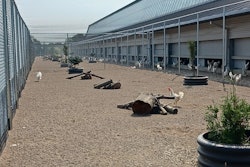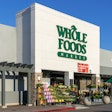
A study published in Nature Food, the result of a collaboration between Politecnico di Milano and the University of Milan, highlights how the increased use of byproducts in the animal feed sector in a circular perspective can lead to significant savings in the use of land and water resources and thus to more sustainable agrifood systems.
Underlying the work signed by Camilla Govoni and Maria Cristina Rulli (Politecnico di Milano), Paolo D’Odorico (University of California at Berkeley) and Luciano Pinotti (University of Milan), there is a thorough analysis of the competition for natural resources between animal and human food production and a search for strategies to reduce this competition and the unsustainable use of natural resources that can result from it.
“Not only does the use of agricultural byproducts in animal diets decrease competition between sectors and pressure on resources, but it would also increase the availability of calories that can be directly earmarked for the human diet,” said Camilla Govoni, researcher at Politecnico di Milano. “If the saved resources are used for other purposes, including the production of plant foods lacking in current diets, it would improve food security in several countries, with healthier as well as more sustainable food choices.”
The study shows that an 11% to 16% substitution of energy-intensive crops used as animal feed with agricultural byproducts would save approximately between 15.4 million and 27.8 million hectares of soil, between 3 and 19.6 cubic kilometers of irrigation water and between 74.2 and 137.8 cubic kilometers of rainwater. This saving of natural resources is an appropriate strategy for reducing the unsustainable use of natural resources locally and globally, i.e. through virtual trade in land and water.
“The use of alternative ingredients in animal diets would lead to increased sustainability and reduced environmental impact not only locally, where the company raises and produces meat and animal products, but also over large distances,” said Maria Cristina Rulli, professor of hydrology and coordinator of the Glob3ScienCE Lab (Global Studies on Sustainable Security in a Changing Environment) of Politecnico di Milano. “Indeed, a decrease in demand for feed could lead to less importation of feed with both economic and socio-environmental benefits. The production of certain feed products actually corresponds to over-pressure on water resources and deforestation, with consequent effects on the concentration of greenhouse gases in the atmosphere, loss of biodiversity and so on.”
Agricultural byproducts are defined as secondary products derived from the processing of primary crops such as cereals and sugar. Included in the study are cereal bran, sugar beet pulp, molasses, distillery residues and citrus pulp.
Food of animal origin is an important source of protein in human diets and contributes on average 16% of global food requirements, while using one-third of the resources used in agriculture and up to three-quarters of all agricultural land for their production.
Animal production can therefore compete directly or indirectly with plant food production.
“By converting fodder and agricultural byproducts into high value-added products and services, animal production makes a fundamental contribution to the modern bio-economy,” said Luciano Pinotti, professor of nutrition and food at the University of Milan. “Alongside this, livestock farming is often held responsible for a significant global environmental impact, which is why it is essential to rethink animal nutrition in particular, as it is one of the main reasons for competition for resources. The approach must be to develop ‘smart animal nutrition,’ where research must come up with solutions to increase animal protein production without increasing the environmental footprint of animal protein. Hence the importance of studying animal nutrition not only in terms of competition, but also in terms of synergies and complementarity with human nutrition, so as to optimize the utilization of nutrients in the food chain. The main challenge is thus to explore innovative feeds which may work as an alternative to conventional ones, possibly do not compete with human nutrition, are part of a circular economy and are intended with a view to ‘one nutrition.’”














